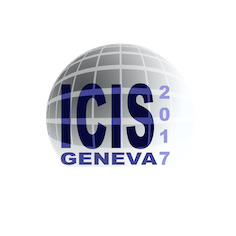Speaker
Description
The ITER Neutral Beam Injection (NBI) relies on sources of negative hydrogen and deuterium ions which deliver a homogeneous and temporally stable extracted negative hydrogen ion beam for up to one hour (57 A extracted D$^–$ current from an extraction area of 2000 cm$^2$), at which the co-extracted electron current has to be lower than the extracted negative ion current. The large ELISE (Extraction from a Large Ion Source Experiment, first plasma in 2013) test facility with an ion source size of 0.9 x 1 m$^2$ is equipped with a ½ ITER-NBI scale H$^–$ source. Negative hydrogen ions are created by conversion of hydrogen atoms and positive ions on a surface with low work function. In order to reach the ITER requirements, a stable and homogeneous coverage of caesium has to be maintained on the plasma grid, which is the first grid of the extraction system. The dynamics of the highly-reactive Cs in the source is complex due to the vacuum conditions (10$^{-7}$ mbar) as well as the plasma-enabled redistribution of Cs.
The Monte-Carlo test particle transport code CsFlow3d has been developed in order to simulate fluxes of Cs and Cs$^+$ as well as the Cs coverage on the surfaces of the ion source during vacuum and plasma phases of the pulsed-driven sources. A successfully applied benchmark of the code at the small size prototype ion source (⅛ ITER source size) allows now for giving predictions also for the larger ion sources. For the ELISE source, the code revealed for the Cs dynamics a high relevance of backstreaming positive ions created in the extraction system, which has to be taken into account since due to the available HV power supply ELISE is presently only able to extract a beam for 10 s each three minutes in long (up to one hour) plasma pulses. The installed Tunable Diode Laser Absorption Spectroscopy (TDLAS) diagnostic at the Cs 852 nm resonance line allows for measuring the neutral Cs density averaged along two horizontal lines-of-sight close to the plasma grid, giving additionally insight into the vertical asymmetry of neutral Cs. As a new feature, the temperature of Cs is evaluated from the Doppler broadening. Predictive results of the code, as the role of backstreaming ions and the temporal behavior of the Cs density in short (20 s) and long pulses could be experimentally verified. A comparison between measurement (Cs density) and modelling (Cs density, fluxes and coverage) is presented for long and short pulses at ELISE.




